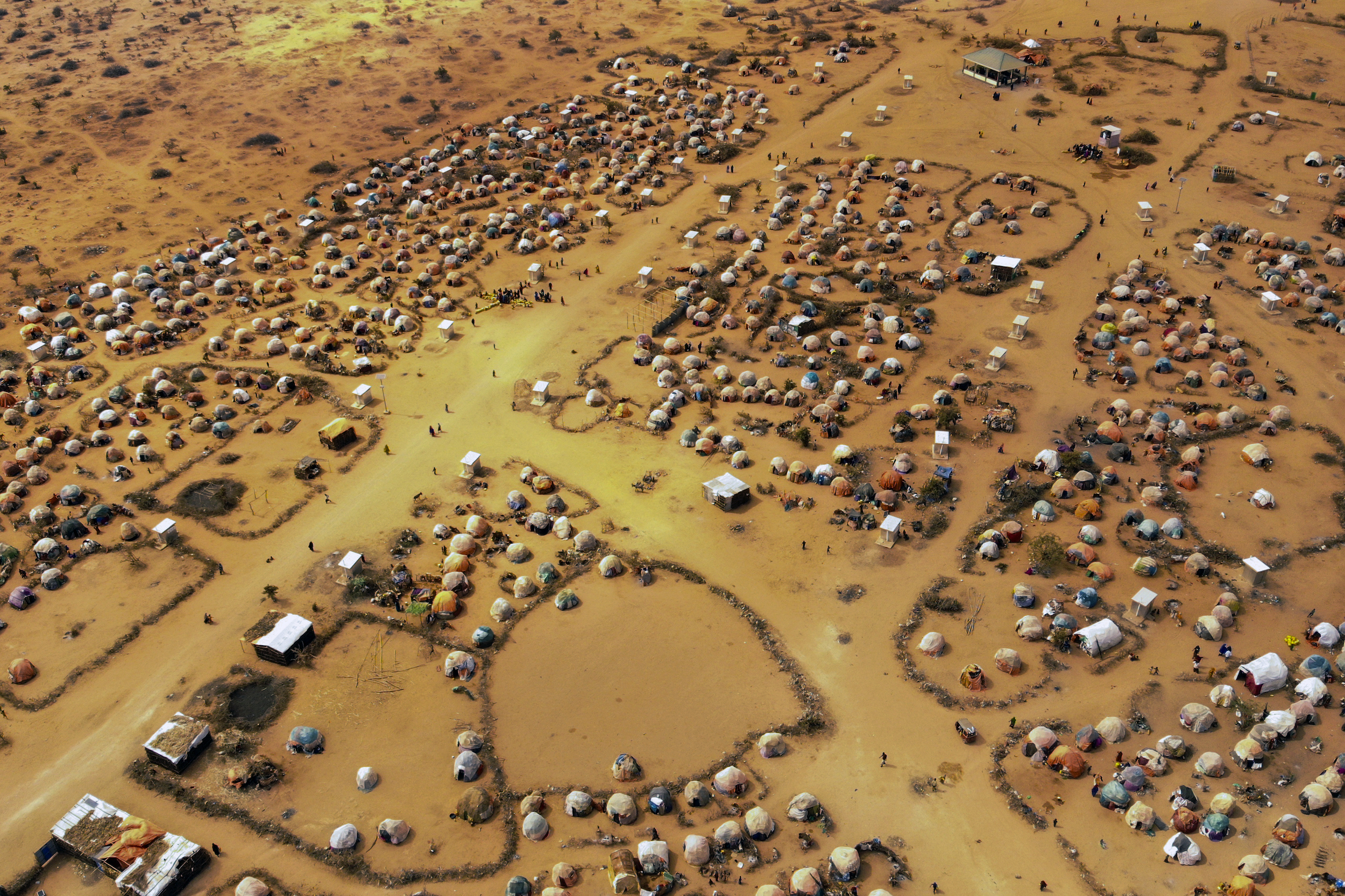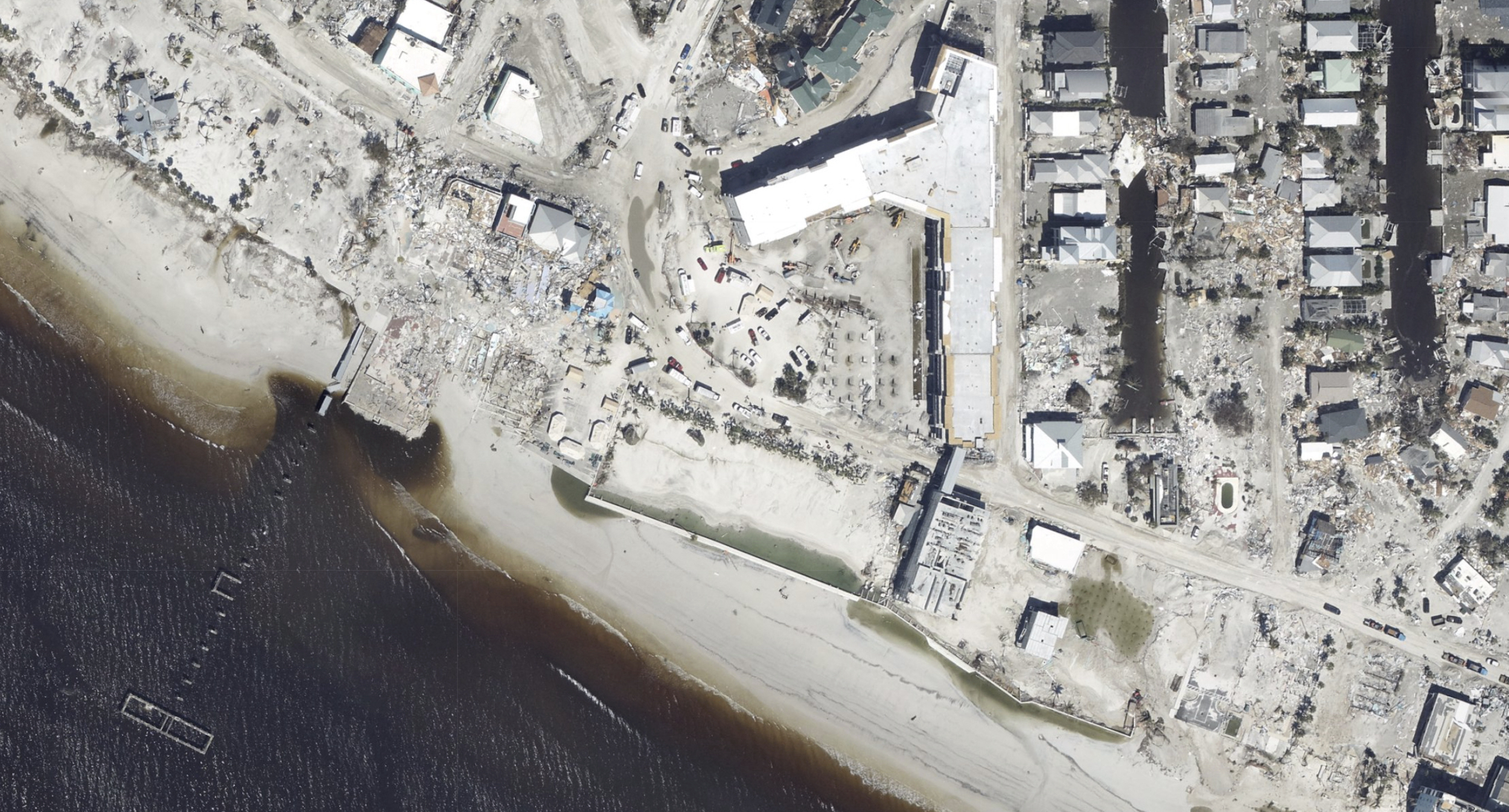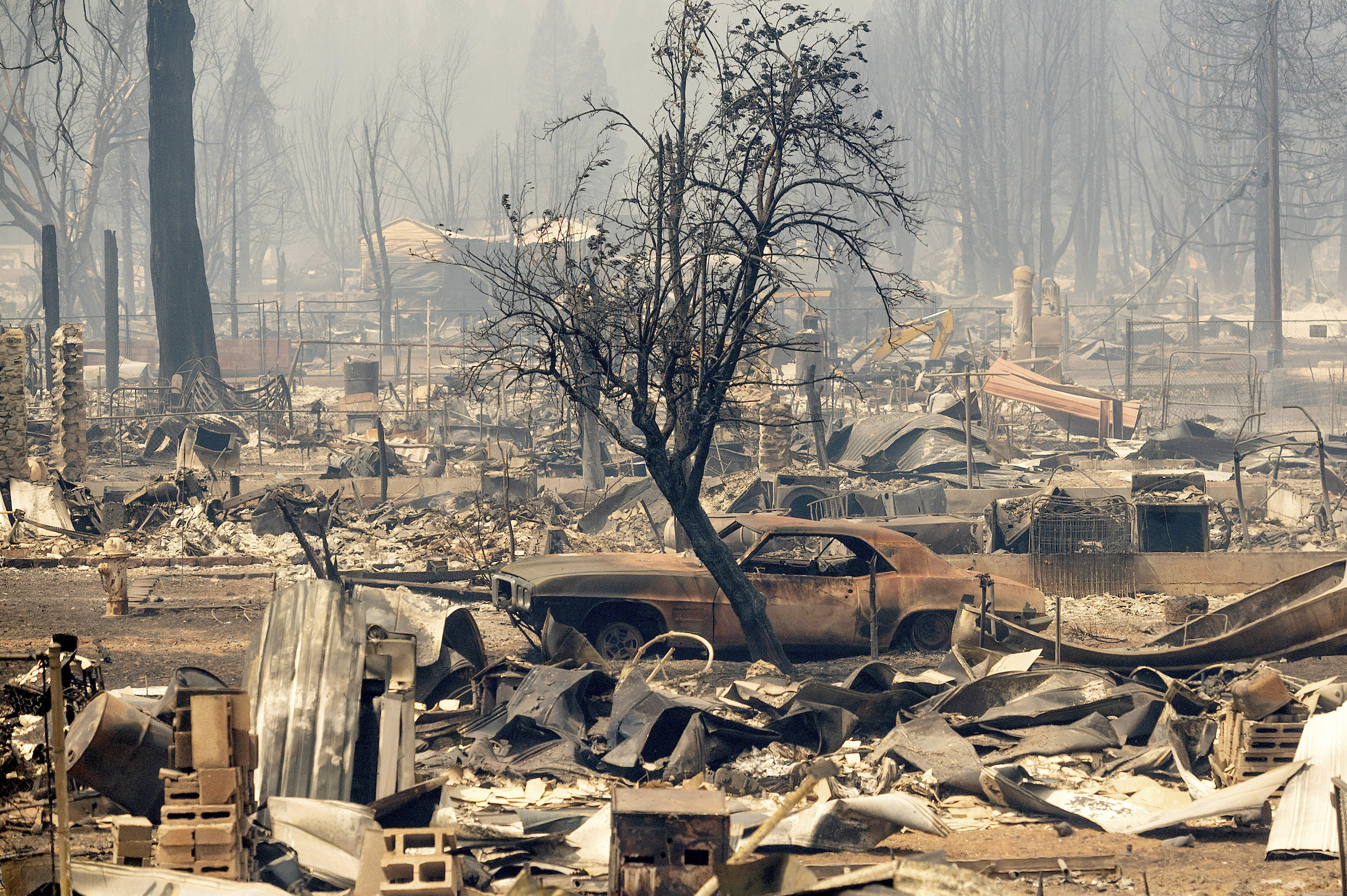 Covering COVID-19 is a daily Poynter briefing of story ideas about the coronavirus and other timely topics for journalists, written by senior faculty Al Tompkins. Sign up here to have it delivered to your inbox every weekday morning.
Covering COVID-19 is a daily Poynter briefing of story ideas about the coronavirus and other timely topics for journalists, written by senior faculty Al Tompkins. Sign up here to have it delivered to your inbox every weekday morning.
When will communities say that some storm-damaged properties should not be rebuilt because they are just too vulnerable to being blown away or washed away again? It is a question that climate change is forcing us to answer, because whatever structures are rebuilt after Hurricane Ian and the storms that follow will face higher seas and be battered by stronger storms.
We are in a build-destroy-rebuild-destroy cycle, and there will be a day — maybe this is it — when we should rethink how we rebuild catastrophe-prone communities in America.
Hurricane Ian destroyed homes and property far away from the shore, miles from what would normally be considered storm-vulnerable areas.
I listen with empathy when people who lost their home or business pledge to rebuild and start over. I get that people want to live where they can see ocean waves from their front steps. I also know that it is unwise.
When wildfires spread across California, some suggested that local governments impose a sort of “recovery tax” on risky properties in disaster-prone areas. The tax would be escrowed to pay for the next recovery. A counterargument might be that the waterfront and scenic hillside homes, businesses and apartments that sit in harm’s way also generate significant tax revenue from tourists and seasonal visitors who only lightly use local infrastructure while they spend their leisure dollars. Do they generate more than they eventually cost the economy? Should we consider such things in such cold economic terms?
And of course, not everyone who owns property in picturesque places like Sanibel Island is a wealthy northerner who winters in the Florida sun. The island’s residents included people like those profiled in a Tampa Bay Times story. The husband is a plumber. His wife cleans houses. They lived there for decades.
The Los Angeles Times, in an essay called “Rebuild, Reburn,” examined the case of one town of 300 people that burned to the ground in the recent wildfires. It would cost a billion dollars to rebuild. And, because of climate change, there is a high likelihood of a similar devastating fire within a decade, experts say.
It would be incredibly unpopular to ban rebuilding in such places. It may even be cold-hearted, and it might be ruinous to communities that thrive on tourism. An alternative to a rebuilding ban would be to strongly enforce new construction codes that require electrical boxes to be raised, garage doors to be reinforced and roofs to be strapped down to prevent wind damage.
But none of that would have stopped the South Florida storm surge, which washed inland, not just along the coast.
A couple of weeks ago, we got a look at our future when Climate Central released its newest land risk analysis that said hundreds of thousands of U.S. coastal properties are projected to be partly or fully submerged in about 30 years. The report said:
By mid-century, more than 648,000 individual tax parcels, totaling as many as 4.4 million acres, are projected to be at least partly below the relevant tidal boundary level. Of those, more than 48,000 properties may be entirely below the relevant boundary level.
Florida, Louisiana, and Texas have the largest number of affected parcels. Buildings may be concentrated at historically-safe elevations along the coast; when rising seas breach a certain threshold, these densely-developed elevation bands reach a tipping point and the number of affected buildings sharply increases.
At least $108 billion of assessed value is at risk from rising seas by 2100, and because complete values were not available for all counties, the actual total is likely to be far higher.
Climate Central said properties that never flooded before will flood in the next few decades. That could mean that if you bought a new place on the beach this year, you could be underwater by the time you pay off your mortgage. By that, I do not mean underwater financially, although that could be true, too.
Time offers further analysis of Climate Central’s data:
Despite clear evidence that water is taking over the land, rebuilding and new construction continues right along the water’s edge.
In one example, Climate Central’s Bain presented a property lot map of Dauphin Island, Ala., where more than a dozen lots were completely in the water. “We have properties that are now underwater as a result of coastal erosion, and property owners who are still receiving property tax bills associated with these properties that they can no longer use,” he said. Still, federal aid and insurance payouts allow the island to continually rebuild.
A Yale study included these passages:
Following each big storm, Collier and Dauphin Island homeowners follow a familiar script. First, they plead for disaster aid from the federal government. Then they file claims with the federal flood insurance program. Finally, with tax dollars and insurance payouts in hand, they rebuild in the same dangerous location, assuming it isn’t underwater. That’s what happened after Frederic, and after Georges, Ivan, and Katrina, and Nate.
Dauphin has received at least $100 million in federal aid, which works out to $170,000 for each of the island’s 1,200 residents.
The global climate migration has begun

Huts provide shelter to Somalis displaced by drought on the outskirts of Dollow, Somalia on Monday, Sept. 19, 2022. Somalia has long known droughts, but the climate shocks are now coming more frequently, leaving less room to recover and prepare for the next. (AP Photo/Jerome Delay)
People around the globe are already making the decision to move away from vulnerable coasts. The phrase “climate migration” refers to when people are forced to leave their homes because of repeated floods, droughts or wildfires. US News and World report said:
Climate migration exists at the global level. There are people all over the world who are being forced out of their homes due to repeat destruction following weather events. In fact, Gaia Vince, a climate migration expert and author of the newly released book, “Nomad Century: How Climate Migration Will Reshape Our World,” calls climate migration “the biggest human crisis you’ve never heard of.”
In 2021 alone, the U.S. experienced 20 separate billion-dollar climate and weather disasters, according to the NOAA National Centers for Environmental Information. In 2020, there were 22 such events. And as these events become increasingly frequent and widespread, we can expect even more people within the U.S. to permanently abandon the areas that are most susceptible to them.
The Endowment Effect: Why people with damaged beachfront homes do not want to move

This satellite map provided by NOAA shows damage from Hurricane Ian to Fort Myers Beach Pier in Fort Myers, Fla., on Saturday, Oct. 1, 2022. (NOAA via AP)
I want to offer this other notion that helps to explain why it is much easier for those of us who do not own beachfront homes to see the wisdom of not allowing more beachfront development. It is what behavioral scientists call the endowment effect. Stay with me here because this gets interesting.
Behavioral scientists first explored the concept 30 years ago. Economist Alexander Smith explains it:
The endowment effect is basically the idea that people overvalue things they already own. And it helps explain the common and seemingly irrational desire of many homeowners to rebuild in places at great risk of wildfire, hurricanes or other natural disasters.
Behavioral economists Daniel Kahneman, Jack Knetsch and Richard Thaler were the first to explain this effect in 1990. They conducted an experiment in which half their subjects were given a coffee mug. They asked those subjects to name the lowest price at which they’d be willing to sell their mug. They then asked those without mugs how much they would be willing to pay buy one.
Since the subjects who received a mug were randomly chosen, there should have been little difference between the selling and buying prices, which represent how each group valued the mug.
Instead, the researchers discovered a significant gap between two groups. The median selling price, representing the people who already had mugs, was US$5.79, more than double the $2.25 people were willing to pay. The conclusion is that someone with an item values it a lot more than someone who does not have it regardless of their actual preferences.
In an article for Phys.org, Smith went on to suggest that rather than an outright ban, shifting the tax expenses of disaster mitigation to the people who are most likely to experience rescuing and rebuilding becomes a stronger disincentive. It seems so easy to those of us who have nothing to lose from such a cost shift, since, as the endowment effect explains, beachfront property is not worth as much to people who do not own it.
Nothing about changing the way we develop our coastlines would be easy, but nothing about the way we allow it makes sense given what we know is a growing danger of more severe storms ahead.
In search of a safer place to live
Last Monday night, when it appeared that Hurricane Ian might inundate our St. Petersburg, Florida, community, my wife and I did what perhaps everyone does when they are potential storm refugees: We kicked around where we could potentially move to get out of nature’s way. Where could you go to escape the threat of hurricanes, tornadoes, wildfires, blizzards, earthquakes and floods?
You could use the government’s Climate Mapping for Resilience and Adaptation to see what is ahead for any property you choose.
We didn’t come up with much of an answer about our perfect climate-safe zone. Lexington, Kentucky, and Knoxville, Tennessee, were high on my list, but my wife was not impressed. She likes year-round sunshine and low pollen counts. I used these maps from ProPublica to make my recommendations.
U.S. News and World Report offered this:
That said, there’s been a large shift in U.S. residents flocking toward the Midwest due to it being less susceptible to major weather events. And a recent report by Scott Bernstein, founder of the Center for Neighborhood Technology, finds that some of the safest areas in the U.S. lie within the Appalachian Mountains and western Michigan. The interior West, which includes Utah, New Mexico, Nevada, and Idaho, is also flagged as a relatively safe option.
Meanwhile, Jesse Keenan, a Tulane University associate professor who studies climate change adaptation, estimates that 50 million Americans could eventually move to regions like New England or the Upper Midwest to escape severe climate. And given that U.S. coastal sea levels are expected to rise by as much as a foot by 2050, he thinks that migration will likely happen sooner rather than later.
The Great Lakes in particular could see a massive influx of migrants in the coming years given that they comprise about 21% of the world’s supply of surface fresh water, and 84% of North America’s supply. And as people become more conscious about air quality, migrants may increasingly flock to Massachusetts and North Dakota, both of which are known for having exceptionally clean air. Hawaii actually ranks first in the U.S. for air quality, but relocating there may be cost-prohibitive for the non-wealthy.
Climate migration could change life in midwestern cities, driving up housing prices and placing new demands on towns’ infrastructure, like water, sewer, electrical and education systems. The Yale School of Environment published a report that said:
Increasingly, worsening climate effects, including heat waves, wildfires, floods, droughts, and sea level rise, are leading a growing number of Americans to have second thoughts about where they are living and to decide to move to places that are perceived to be less exposed to these impacts, according to anecdotal reports and a growing volume of academic research. Some, like the Brazil family, are forced to move to safer areas, while others are well-to-do homeowners who are choosing to leave before fires or floods drive them out.
Another projection, by Matthew Hauer, an assistant professor of sociology at Florida State University, is that 13.1 million Americans will relocate because of sea-level rise alone by 2100, based on projections that seas along the U.S. coast will rise by an average of 1.8 meters — nearly six feet — by then.
Will countries begin recognizing asylum for climate migrants? Should we?
The Brookings Institution predicts that climate migration will displace 143 million people on three continents by 2050. Latin America is among those regions, and the U.S. can certainly expect to feel the effects of that movement.
Canada is already facing climate migration issues. Wired reported:
Climate change is already a factor causing people to immigrate to Canada, said Syed Hussan, the executive director of the Migrant Workers Alliance for Change (MWAC), which worked with CAN-Rac to send the letter. But while climate migrants come to the country as workers, students, or refugees, they “may not even be able to describe their experiences having resulted from climate change.”
The PBS NewsHour recently dove into the global implications of climate migration and what it could mean to asylum rules:
While no nation offers asylum to climate migrants, UNHCR published legal guidance in October 2020 that opens the door for offering protection to people displaced by the effects of global warming. It said that climate change should be taken into consideration in certain scenarios when it intersects with violence, though it stopped short of redefining the 1951 Refugee Convention.
The commission acknowledged that temporary protection may be insufficient if a country cannot remedy the situation from natural disasters, such as rising seas, suggesting that certain climate displaced people could be eligible for resettlement if their place of origin is considered uninhabitable.
An increasing number of countries are laying the groundwork to become safe havens for climate migrants. In May, Argentina created a special humanitarian visa for people from Mexico, Central America, and the Caribbean displaced by natural disasters to let them stay for three years.
Shortly after taking office, President Joe Biden ordered his national security adviser to conduct a months-long study that included looking at the “options for protection and resettlement of individuals displaced directly or indirectly from climate change.” A task force was set up, but so far the administration has not adopted such a program.
Final thoughts on rebuilding

Homes and cars destroyed by the Dixie Fire line central Greenville on Thursday, Aug. 5, 2021, in Plumas County, Calif. (AP Photo/Noah Berger)
Journalists have an opportunity and obligation to explore this uncomfortable issue because politicians will dodge it precisely because it is uncomfortable. Sometimes the hardest and wisest thing we can do is to stop doing what we have always done — rebuild and hope for the best — just because that is what we always do.
I want to return to the Los Angeles Times essay on rebuilding after wildfires. It applies to hurricane zones and to areas along rivers that flood their banks every spring. The Times writers said:
What California is doing is dangerous and unsustainable, yet it continues down a well-trodden path, never hesitating to rally around people who have lost their livelihoods to a disaster, whether it be a mudslide or an earthquake — but especially a wildfire.
We are #ParadiseStrong, #SantaRosaStrong, #GrizzlyFlatsStrong and now #GreenvilleStrong. And we’ve spent billions in taxpayer dollars to prove it, along with ensuring that Pacific Gas & Electric, responsible for sparking far too many of these destructive conflagrations, is on the hook to pay billions more and to help rebuild.
We do this because it’s the morally right thing to do for our fellow Californians, many of whom are elderly and poor and don’t deserve the misery and uncertainty of losing everything but the clothes on their backs.
But the cold, hard logic of science has a way of poking holes in emotionally driven policies and moral certainties. This is especially true when it comes to the profound environmental changes underway because of human-exacerbated aridification.
The essay confronts us with this uncomfortable question: “And if we don’t rebuild every town, which ones should make the cut? And why?”
We’ll be back tomorrow with a new edition of Covering COVID-19. Are you subscribed? Sign up here to get it delivered right to your inbox.











